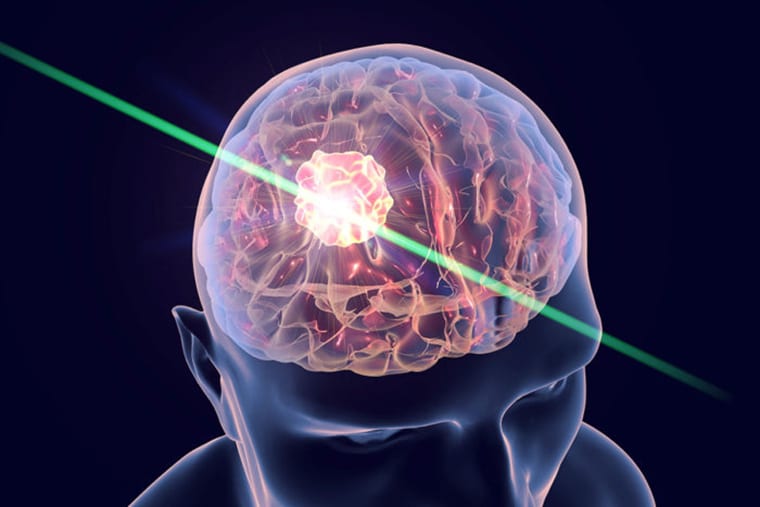Therapy increases survival in grim diagnosis
From the WashU Newsroom…
People diagnosed with the aggressive brain cancer glioblastoma face a grim prognosis. Half die within 14 months of diagnosis.
Even if initial treatment with surgery, radiation and chemotherapy is successful, such brain tumors typically recur, leaving patients with few options. Now, a research team at Washington University School of Medicine in St. Louis has found that laser treatment designed to destroy the tumor can add an average of two months to a patient’s life, compared with chemotherapy, the standard treatment for glioblastomas that have recurred. The increase is small but meaningful for people who have only months left to live.
“We’re not able to cure these types of really nefarious tumors, but we keep on working on finding new treatments that give people just a little more time,” said senior author Eric Leuthardt, MD, a professor of neurosurgery, of neuroscience, of biomedical engineering, and of mechanical engineering & applied science. “We’re nibbling away at this disease, step by step, and cumulatively these small advances can add up to a real improvement for patients.”
The study, published Aug. 22 in the journal Neurosurgery, gathered survival data by reviewing all laser treatments for glioblastoma from 2010 to 2016 at Siteman Cancer Center at Barnes-Jewish Hospital and Washington University School of Medicine. In that time, 54 patients received 58 laser treatments. Of those, 17 treatments were performed on inoperable tumors and 41 on tumors that had recurred after primary treatment.
Most people diagnosed with glioblastoma undergo surgery that involves removing part of the skull to cut out the tumor, followed by both chemotherapy and radiation. But the tumor inevitably comes back, and a repeat operation is considered too taxing for many patients.
